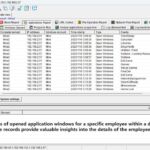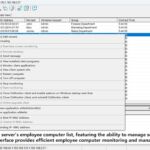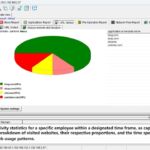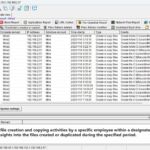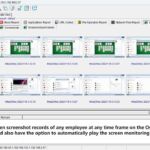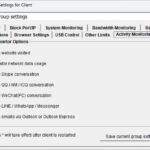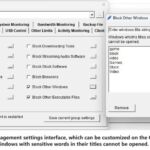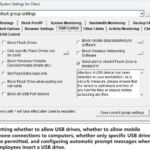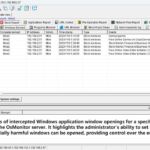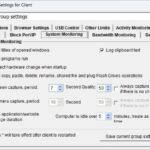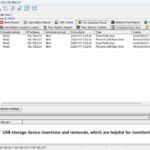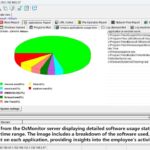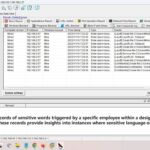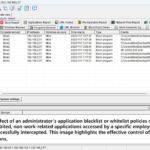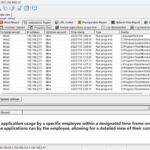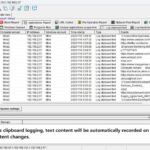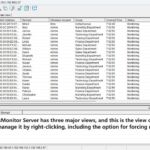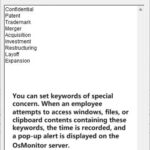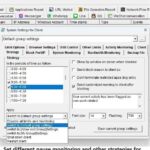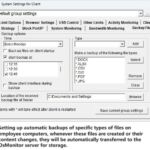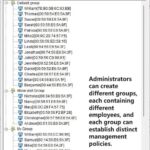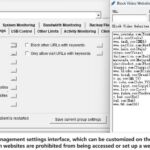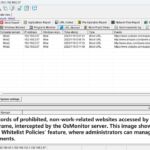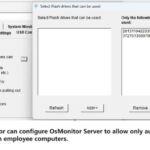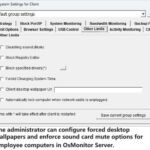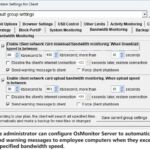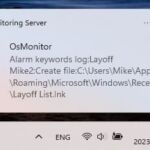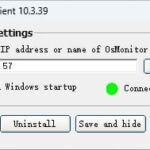In the realm of screen monitoring software, matching algorithms function as adept masters of observation, playing a supremely vital role. These algorithms act like intelligent detectives, capable not only of detecting activities in specific frames and capturing human behaviors but also of identifying various patterns. Their utility is extensive, spanning from ensuring security to analyzing user tendencies and more. Of course, their prowess extends beyond a single domain, encompassing security surveillance, exploring user preferences, and even safeguarding automated processes.
The following are key aspects of applying matching algorithms for data stream analysis in screen monitoring software:
- Data Collection and Preprocessing: In screen monitoring software, the first step involves collecting data streams from user screens. This could include screen captures, video recordings, and more. The collected data can be voluminous, making preprocessing necessary. This may involve compression, sampling, denoising, and other operations to reduce storage and processing overhead.
- Feature Extraction: Matching algorithms require features for comparison and matching. These features could be image characteristics, text attributes, time series data, and more, depending on the content to be monitored and analyzed. For instance, image features might encompass color, shape, texture, and other information.
- Pattern Matching Algorithms: Once suitable features are obtained, pattern matching algorithms can be employed to identify specific screen activities or behaviors. This might involve rule-based matching, template-based matching, machine learning algorithms (such as convolutional neural networks, support vector machines), and others. These algorithms are used to compare collected data with known patterns or rules to find matches.
- Anomaly Detection: Apart from identifying known patterns, matching algorithms can also be employed for anomaly detection. By establishing models of normal behavior, deviations from these models can be recognized, which is particularly useful for security monitoring and intrusion detection.
- Real-time Performance and Efficiency: Screen monitoring software often requires real-time data stream analysis, necessitating efficient execution of matching algorithms to avoid delays. Optimizing algorithms for processing speed and efficiency is crucial.
- User Privacy: When designing matching algorithms, considerations for user privacy are essential. Anonymization or encryption of sensitive information might be necessary to protect users' personal data.
- Adaptability and Automation: Matching algorithms should be adaptable to various usage scenarios and data types. Advanced algorithms might possess self-learning and adaptive capabilities, allowing them to update models based on new data.
- Result Visualization and Reporting: Analysis results need to be presented to users in a visual manner for them to comprehend the monitoring situation. Generating reports can also be helpful, detailing detected activities, patterns, and anomalies.
- False Positives and False Negatives: In practical applications, matching algorithms might produce false positives (erroneously labeling normal behavior as abnormal) and false negatives (failing to detect genuine anomalies). Continuous optimization and fine-tuning of algorithms are necessary to strike a balance between accuracy and usability.
In summary, these matching algorithms within screen monitoring software act as adept detectives, skillfully observing diverse activities on screens while adding a spark to security monitoring, user behavior analysis, and other objectives. However, they face several technical challenges, such as data processing, pattern recognition, and real-time processing, which require clever handling and strategic solutions.
About OsMonitor:
The mission of OsMonitor is to create a Windows computer system tailored for work purposes, effectively regulating employee computer behavior. It enables employers to understand what employees are doing each day, monitoring every action, including screen activity and internet usage. Additionally, it restricts employees from engaging in specific activities such as online shopping, gaming, and the use of USB drives.
OsMonitor, designed purely as software, is remarkably user-friendly and requires no additional hardware modifications. A single management machine can oversee all employee computers. As a leading brand in employee computer monitoring software with over a decade of successful operation, OsMonitor has rapidly captured the global market with its minimal file size and excellent cost-effectiveness compared to similar software. At this moment, thousands of business computers worldwide are running OsMonitor daily.




